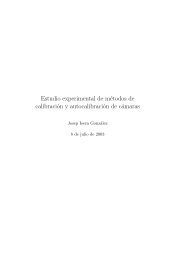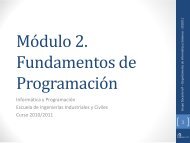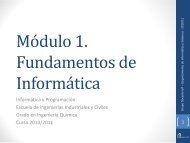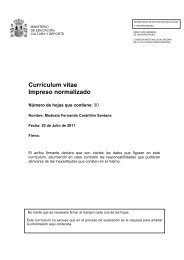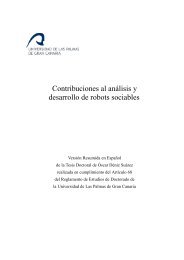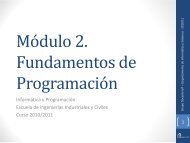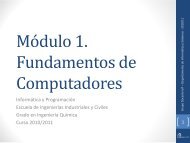PhD Document - Universidad de Las Palmas de Gran Canaria
PhD Document - Universidad de Las Palmas de Gran Canaria
PhD Document - Universidad de Las Palmas de Gran Canaria
Create successful ePaper yourself
Turn your PDF publications into a flip-book with our unique Google optimized e-Paper software.
CHAPTER 3. APPROACH AND ARCHITECTURE<br />
• We are obtaining knowledge of exactly that what we want to reproduce, which in a<br />
sense provi<strong>de</strong>s some guarantee that the effort is worthwhile. That knowledge is, to say<br />
the least, a good starting point.<br />
• The study of human intelligence and capacities has produced and is still producing<br />
invaluable results. Advances in neuroscience have been particularly significant in the<br />
last fifteen years, in part thanks to the aid of new exploratory techniques like magnetic<br />
resonance imaging.<br />
By contrast, the synthetic approach aims at building artificial systems, see Figure 3.1.<br />
The goal is not so much to know how the object is, but how it should be to fulfil a series of<br />
requirements. This can be done to pursue three goals [Pfeifer and Scheier, 1999]:<br />
• To mo<strong>de</strong>l biological systems<br />
• To explore principles of intelligence<br />
• To <strong>de</strong>velop applications<br />
As Figure 3.1 shows, analysis and synthesis complement one another. Every synthe-<br />
sis is built upon the results of a preceding analysis, and every analysis requires a subsequent<br />
synthesis in or<strong>de</strong>r to verify and correct its results.<br />
Analysis<br />
Other sources of<br />
knowledge or inspiration<br />
Synthesis<br />
human robot<br />
Figure 3.1: Analysis and Synthesis.<br />
In Chapter 1 it was observed that for social robots there may be less guarantee of good<br />
performance than in other types of robots. The fact is that, for some types of machines like<br />
robotic manipulators, one can extract a set of equations (or algorithms, representations,...)<br />
that are known to be valid for solving the task. Such equations would have been obtained<br />
after analytical effort, mainly related to kinematics. Once that these equations are stored in<br />
the control computer the manipulator will always move to <strong>de</strong>sired points and therefore there<br />
is a sort of <strong>de</strong>ductive process involved.<br />
26



